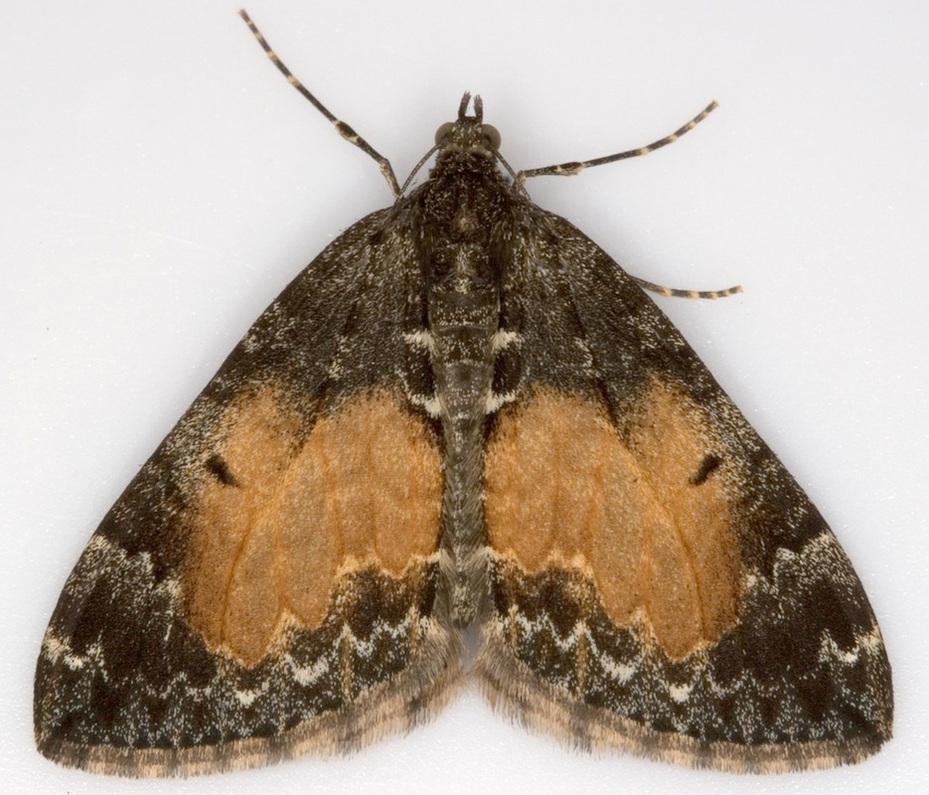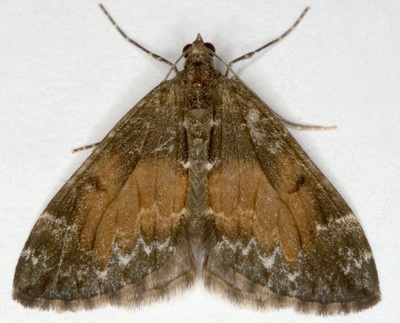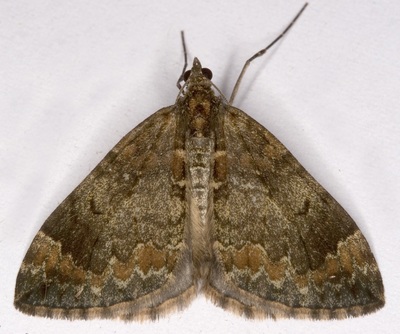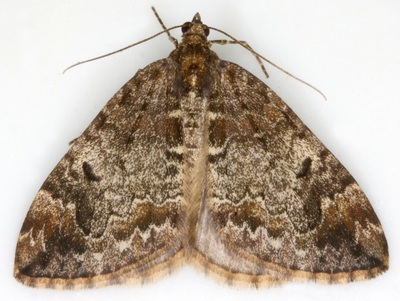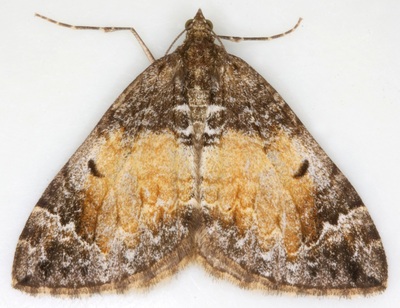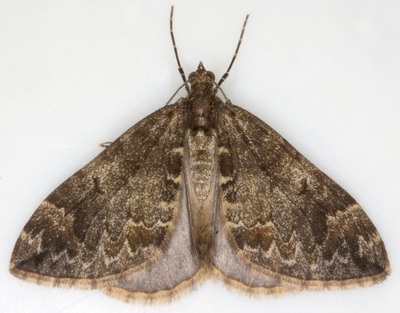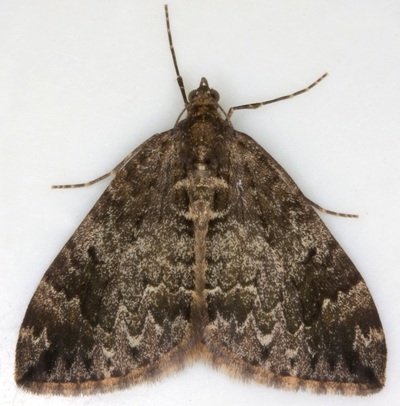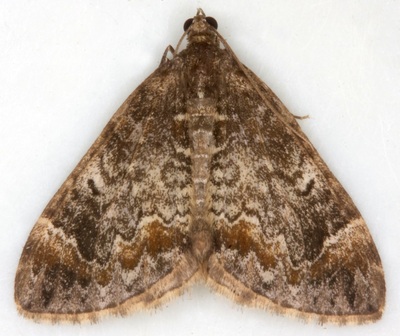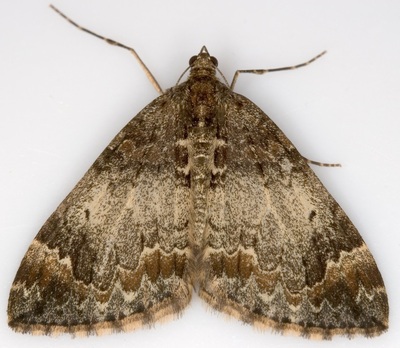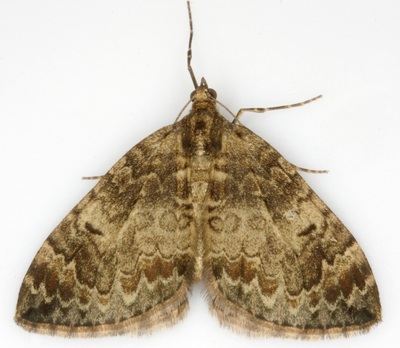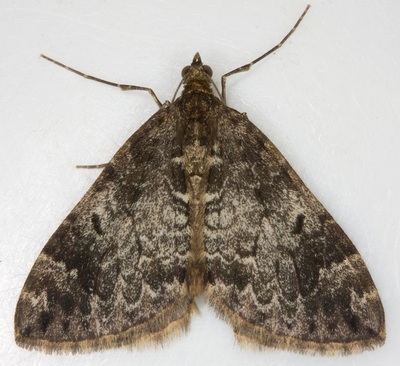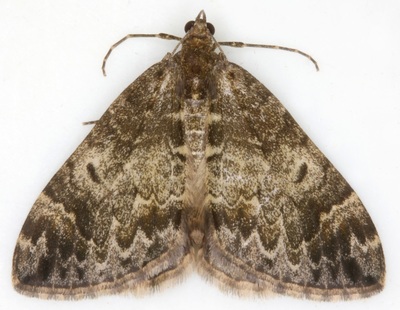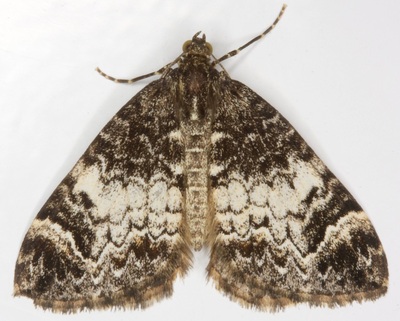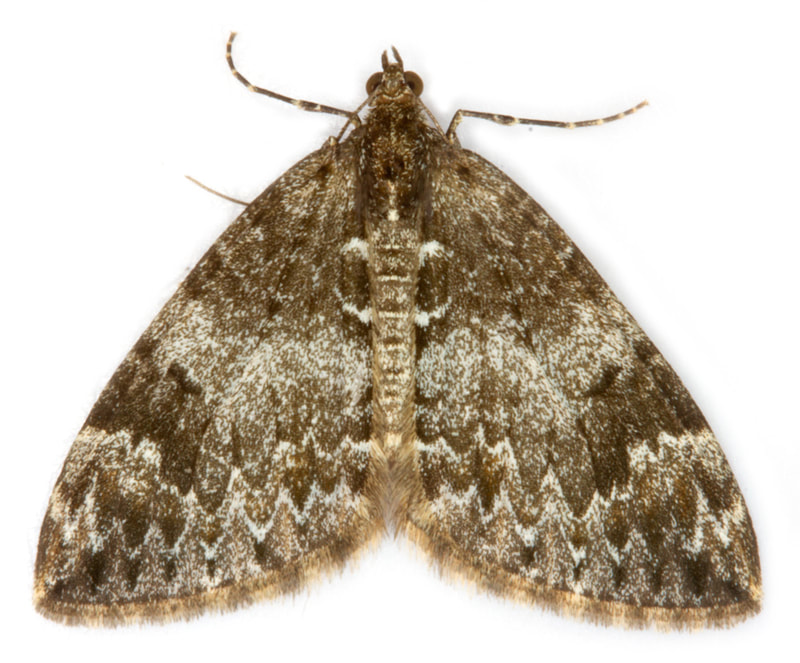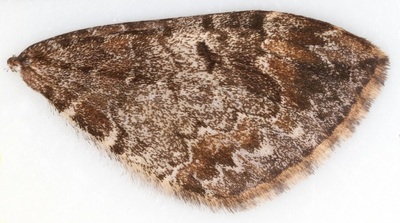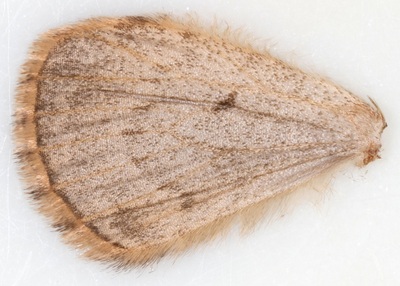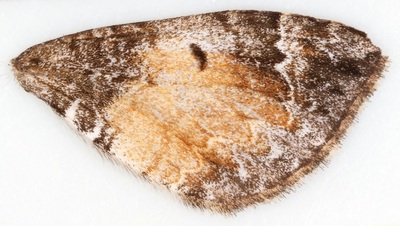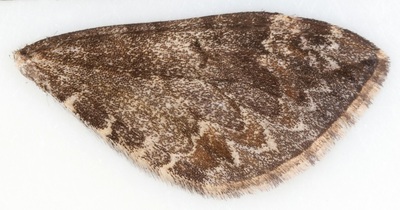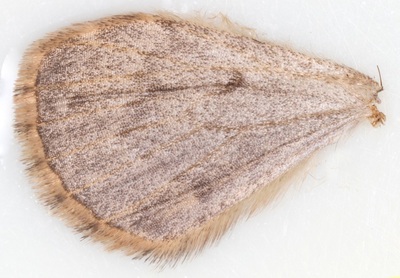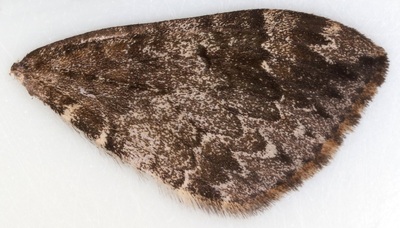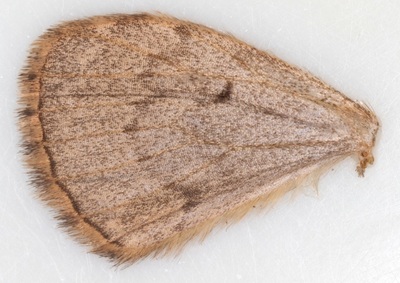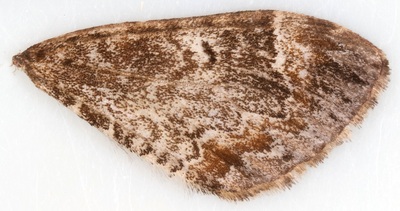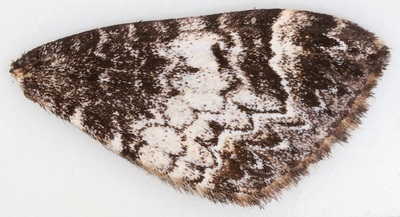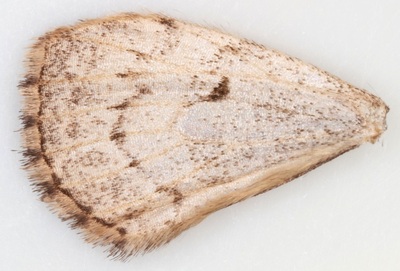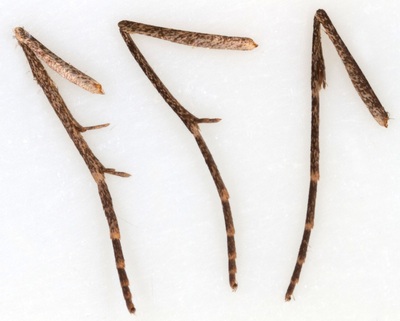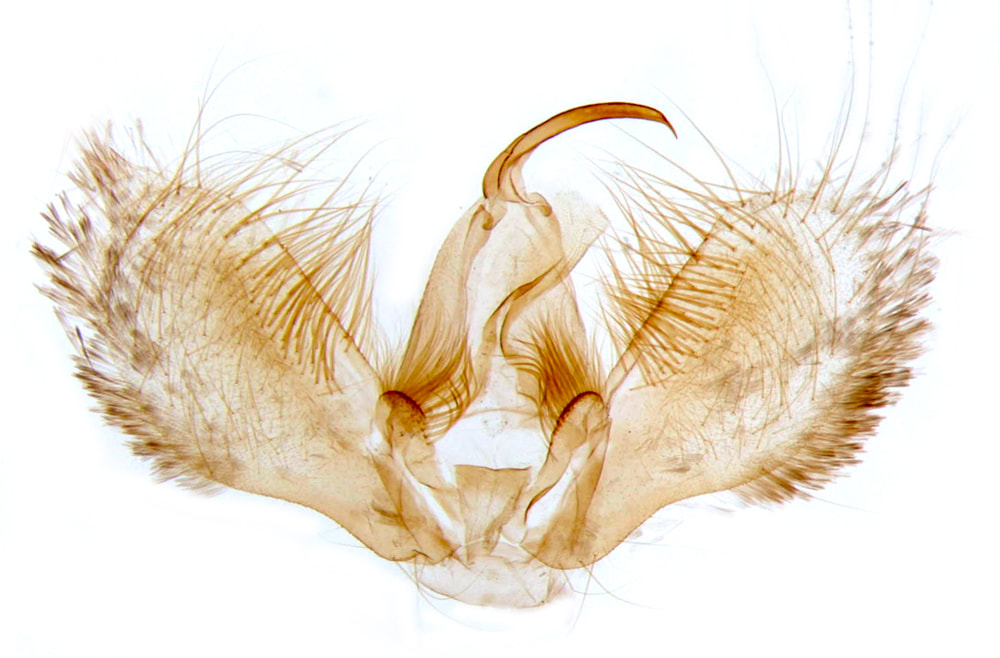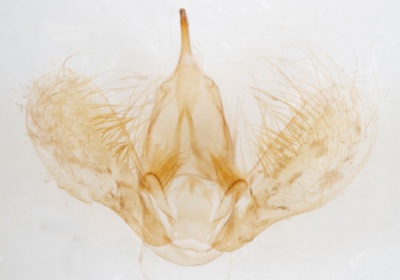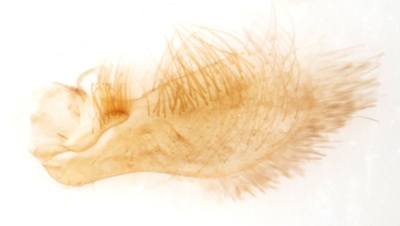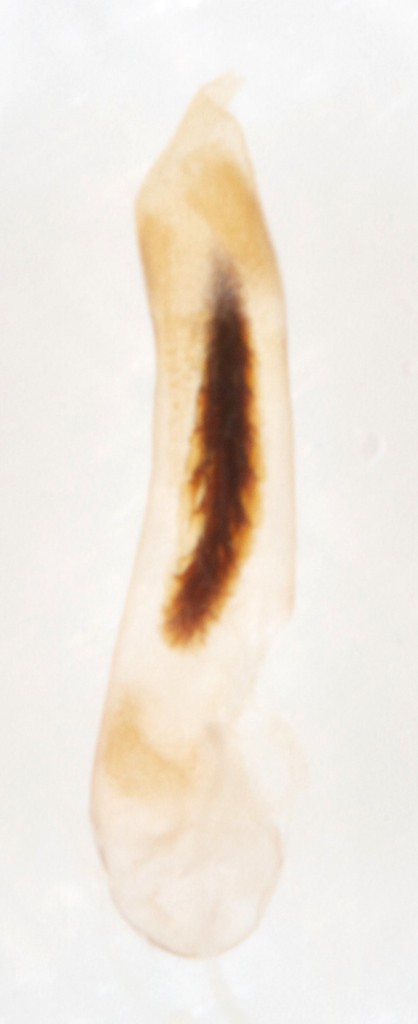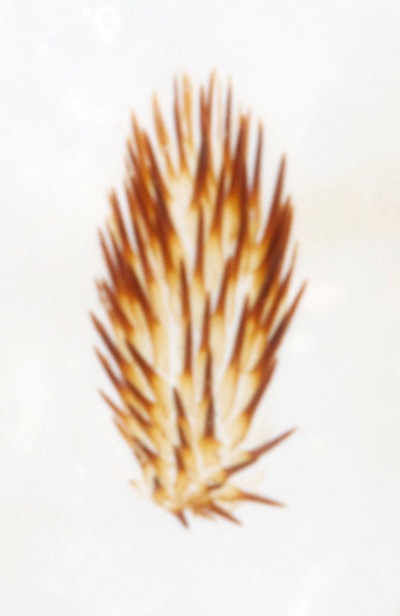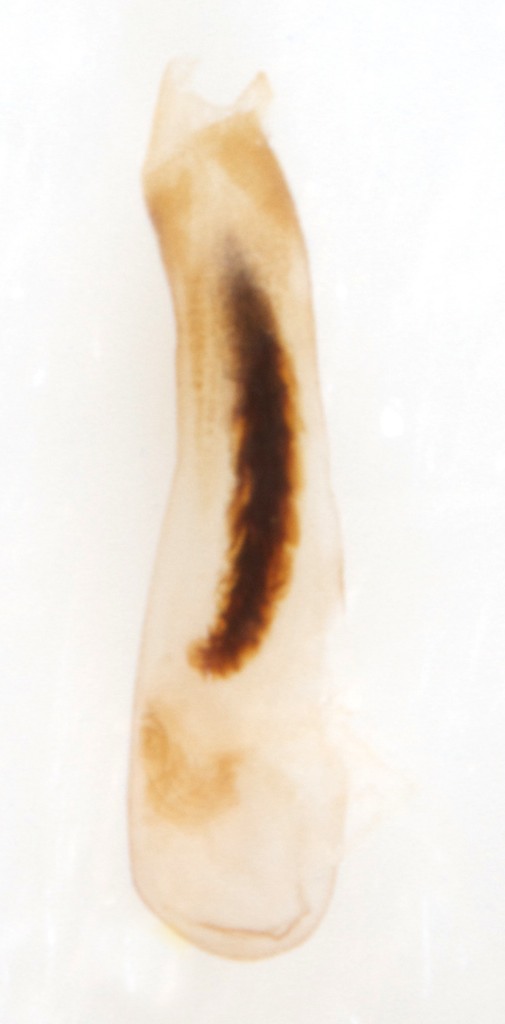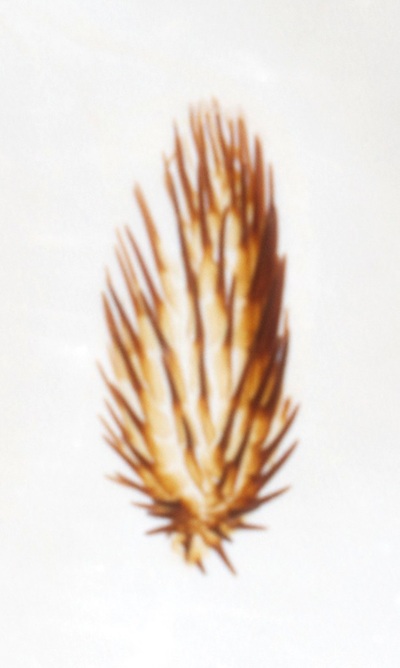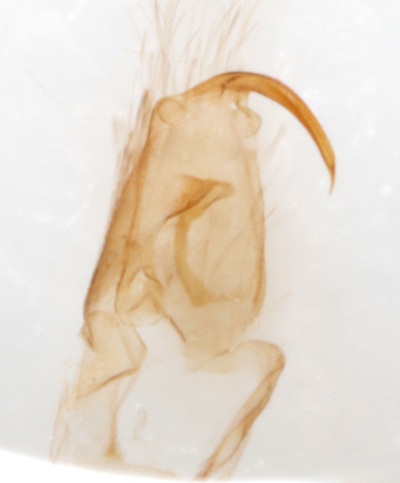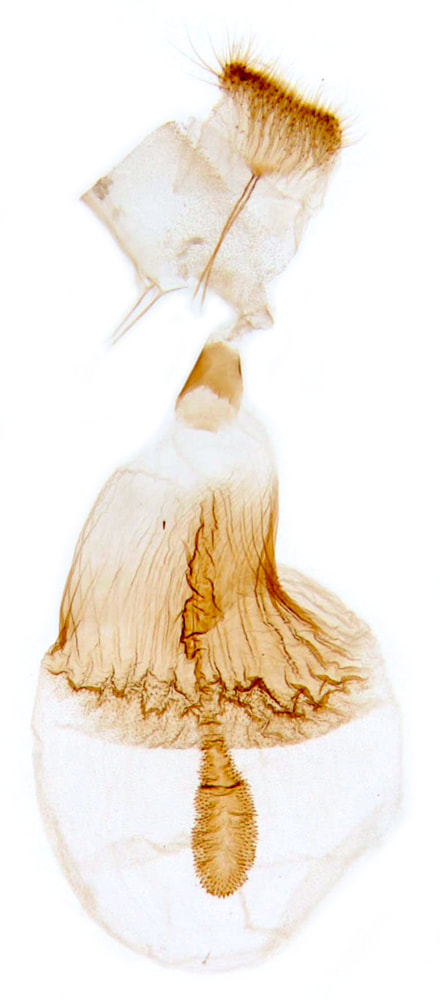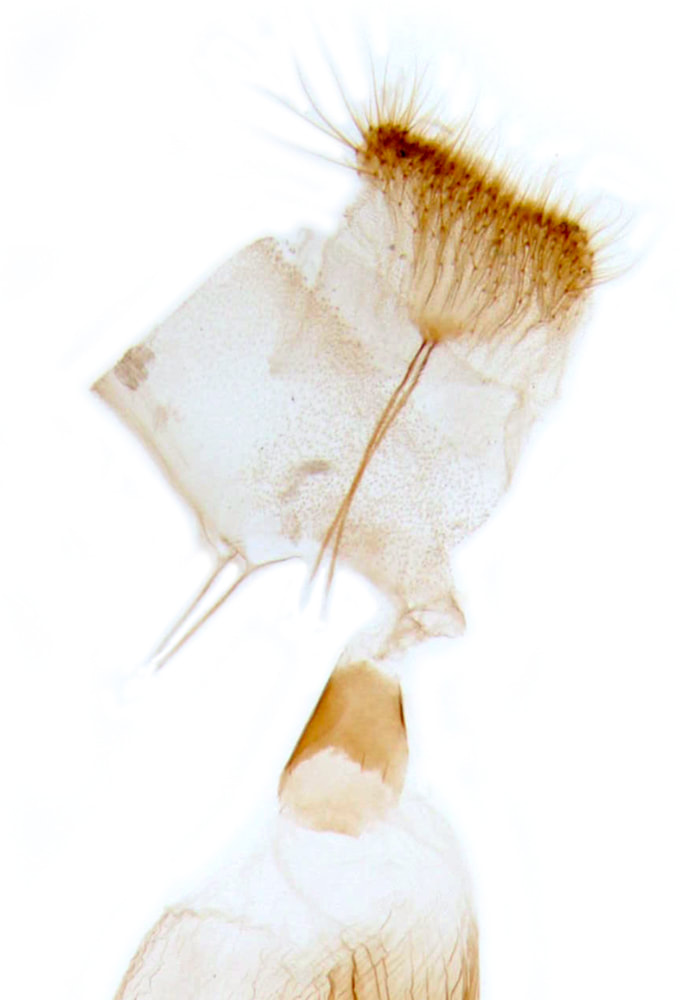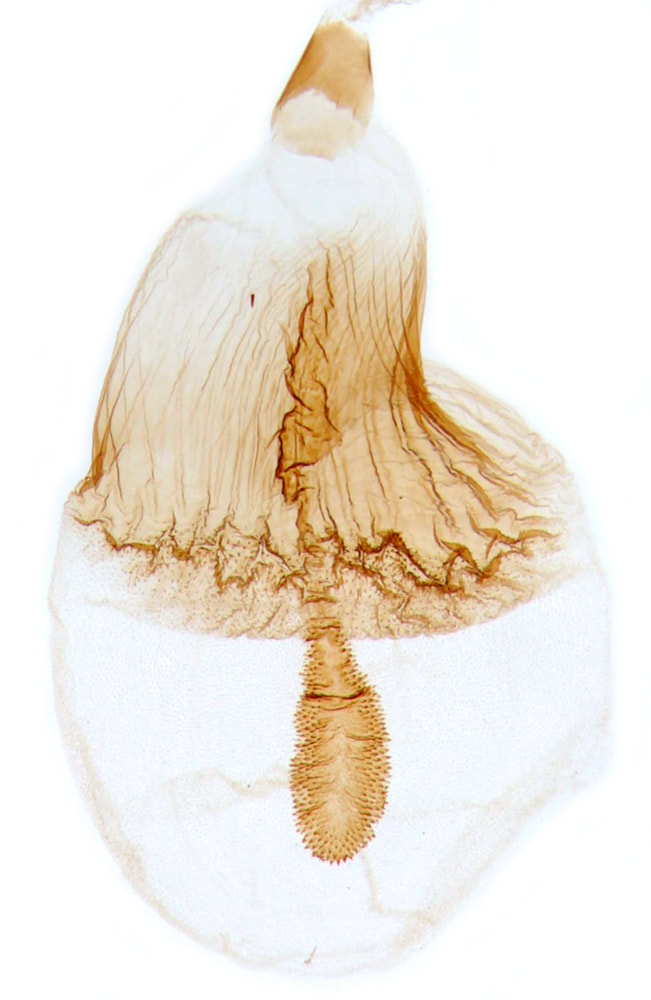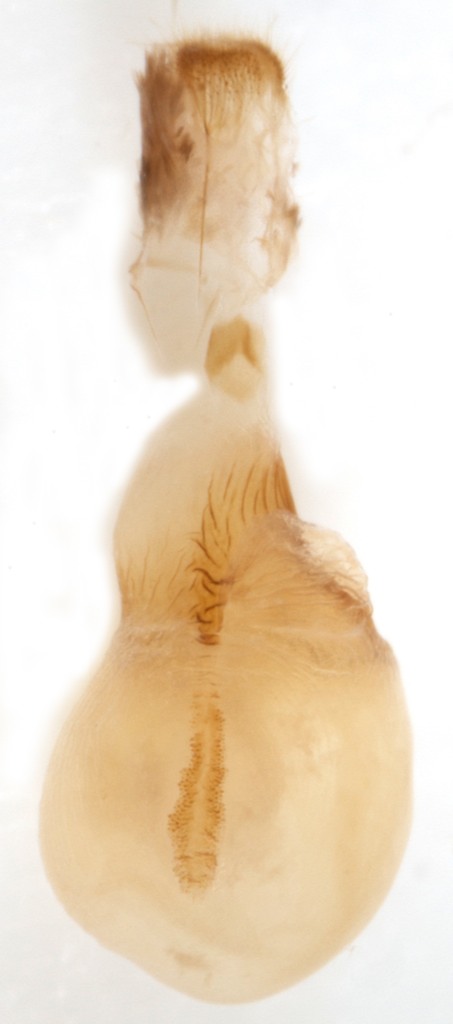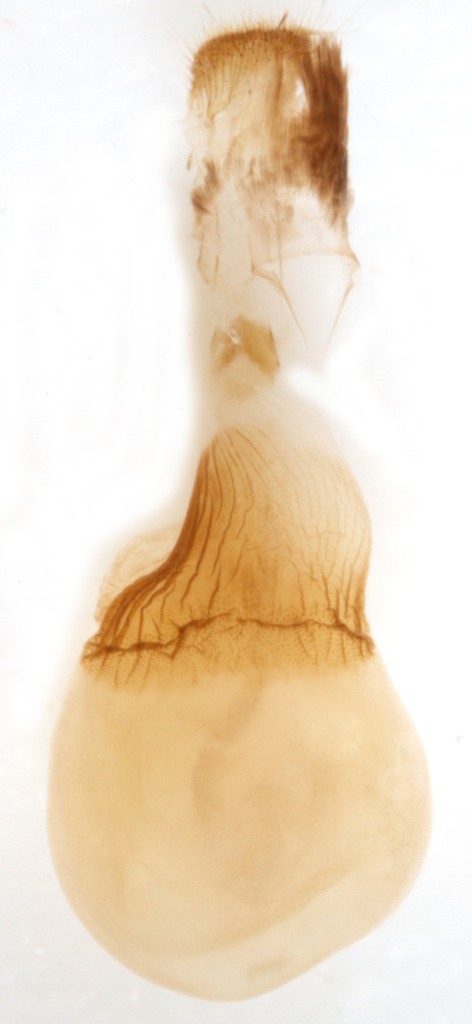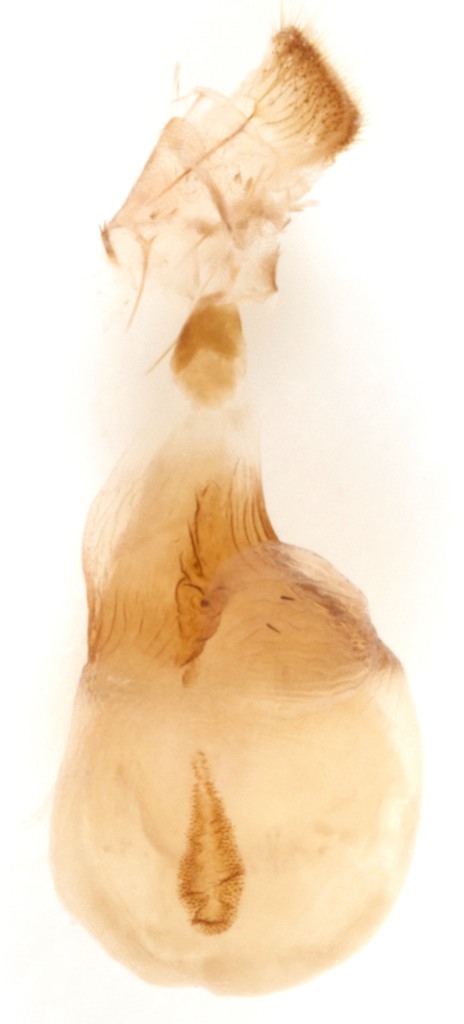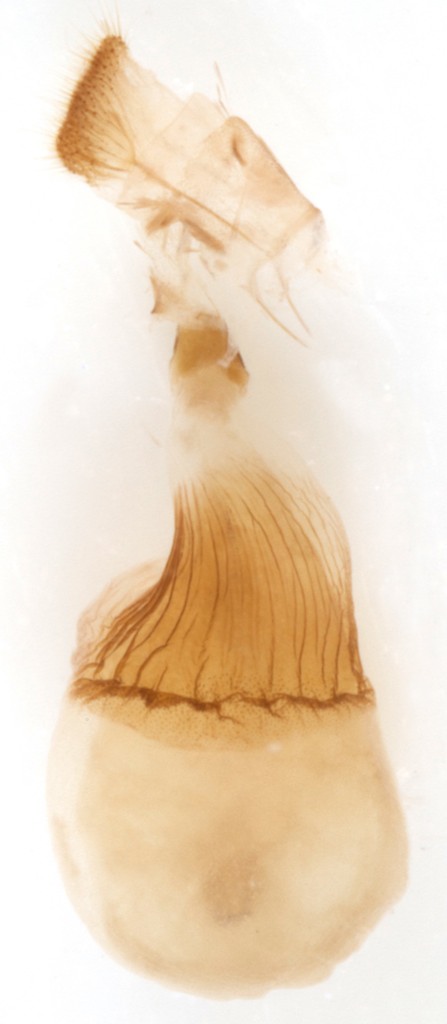70.097 Dysstroma truncata (Common Marbled Carpet)
fw: 14-19mm; bivoltine May-Jun, Aug-Oct (univoltine Jul-Aug in parts of Scotland); many herbaceous plants and trees; common throughout GB.
Synonym: Chloroclysta truncata
Synonym: Chloroclysta truncata
ID: D.truncata (Common Marbled Carpet) and D.citrata (Dark Marbled Carpet) are both very variable and very similar to each other. They can be distinguished by the following features, which are illustrated in the galleries on the Dysstroma page:
1) Forewing median fascia has a 2-3-pointed projection from its distal margin - the projection is longer and its apices more pointed in D.citrata.
2) Hindwing median cross-line has a pointed ~90 degree angle in D.citrata and a rounded obtuse angle in D.truncata - best seen on underside.
Male Genitalia
3a) Cornutal bundle occupies ~1/2 diameter of aedeagus in D.truncata, ~3/4 in D.citrata.
3b) Peripheral and central cornuti similar in D.truncata; peripheral cornuti much stronger than central cornuti in D.citrata.
Female Genitalia
4a) In D.truncata the sclerotisation of the ductus bursae (DB) is about as long as the diameter of the DB, while in D.citrata the sclerotisation is about twice as long as the diameter of the CB.
4b) The 'frill' of sclerotisation in the posterior portion of the corpus bursae has a transverse anterior border in D.truncata, while in D.citrata its anterior border is rounded.
4c) The corpus bursae is broader in D.truncata so that the signum occupies 1/6 to 1/8 of its transverse diameter, while that of D.citrata occupies 1/4 to 1/5.
D.concinnata (Arran Carpet) has been considered to be a univoltine variant of D.truncata occurring on the Inner and Outer Hebrides. It was the subject of a paper published in Atropos (no47 Autumn 2012). The median fascia of D.concinnata is consistently marbled black and white - this form does not show the variability seen in D.truncata and this pattern is not exactly replicated in any form of D.truncata. There are no consistent genital differences between D.truncata and D.concinnata. Whether D.concinnata is a valid species remains unresolved.
1) Forewing median fascia has a 2-3-pointed projection from its distal margin - the projection is longer and its apices more pointed in D.citrata.
2) Hindwing median cross-line has a pointed ~90 degree angle in D.citrata and a rounded obtuse angle in D.truncata - best seen on underside.
Male Genitalia
3a) Cornutal bundle occupies ~1/2 diameter of aedeagus in D.truncata, ~3/4 in D.citrata.
3b) Peripheral and central cornuti similar in D.truncata; peripheral cornuti much stronger than central cornuti in D.citrata.
Female Genitalia
4a) In D.truncata the sclerotisation of the ductus bursae (DB) is about as long as the diameter of the DB, while in D.citrata the sclerotisation is about twice as long as the diameter of the CB.
4b) The 'frill' of sclerotisation in the posterior portion of the corpus bursae has a transverse anterior border in D.truncata, while in D.citrata its anterior border is rounded.
4c) The corpus bursae is broader in D.truncata so that the signum occupies 1/6 to 1/8 of its transverse diameter, while that of D.citrata occupies 1/4 to 1/5.
D.concinnata (Arran Carpet) has been considered to be a univoltine variant of D.truncata occurring on the Inner and Outer Hebrides. It was the subject of a paper published in Atropos (no47 Autumn 2012). The median fascia of D.concinnata is consistently marbled black and white - this form does not show the variability seen in D.truncata and this pattern is not exactly replicated in any form of D.truncata. There are no consistent genital differences between D.truncata and D.concinnata. Whether D.concinnata is a valid species remains unresolved.
|
§A1 St Marys, Isles of Scilly; 03/10/2014; female
§A2 St Marys, Isles of Scilly; 13/10/2014; female §A3 St Marys, Isles of Scilly; 13/10/2014; male; fw 15.1mm §A4 St Marys, Isles of Scilly; 13/10/2014; female; fw 16.2mm §A5 St Marys, Isles of Scilly; 14/10/2014; male; fw 13.9mm §A6 Foulness, Essex; 20/05/2007 §A7 Eskdale, Cumbria; 19/08/2007 §A8 Eskdale, Cumbria; 20/08/2007 §A9 Titchwell, Norfolk; 22/09/2007 |
§A10 St Marys, Isles of Scilly; 30/09/2008
§A11 Newgale, Pembrokeshire; 19/05/2011 §A12 St Mary, Isles of Scilly; 12/10/2013; male §A13 Skye; 06/08/2013; female; fw 15.6mm §14 Cliburn Moss, Cumbria; 18/06/2019 §15 St Marys, Isles of Scilly; 06/10/2020; male; fw 13.5mm §16 St Marys, Isles of Scilly; 09/10/2020; male; fw 15.1mm |
Page published 20/04/2013 | extensively revised and renumbered 27/10/2014 (§A1-12) | §14 added 23/01/2020 | §15&16 added 28/11/2020
